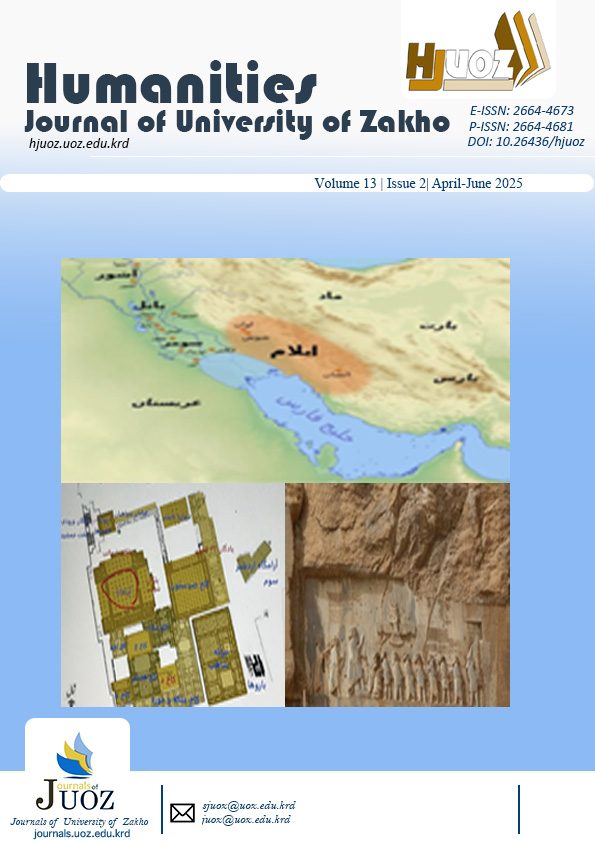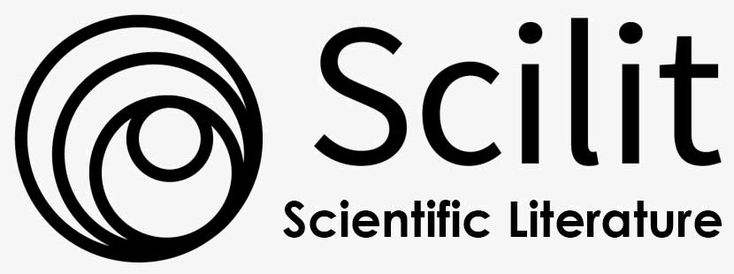DEVIATION AND PARALLELISM IN LONGFELLOW’S THE RAINY DAY: A STYLISTIC STUDY
DOI:
https://doi.org/10.26436/hjuoz.2025.13.2.1566Keywords:
Deviation, Stylistics, Parallelism, Analysis, ForegroundingAbstract
The present paper is an attempt to analyze Longfellow’s ‘The Rainy Day’ (1842) from the perspective of parallelism and deviation which are two stylistic tools utilized to unravel the intention behind any given literary work. These stylistic devices are said to have been utilized by writers as strategies to establish a hierarchy of meanings and themes in the text, bringing some to the fore, shifting others to the background, or repeating some structural features here and there. The procedure adopted is analyzing the poem under study, which consists of three stanzas, in the light of the above mentioned stylistic devices, highlighting their role in revealing the poet’s intention behind this literary work. The paper has come out with certain conclusions, such as that the poet utilizes parallelism to convey the cyclic repetition of natural and social events which often cause boredom and monotony; internal deviation is utilized by the writer to result in a contrast between an idea expressed in the first two stanzas, and another stated in the third. The paper rounds off with a list of the references from which inspirations have been taken.
Downloads
References
Finch, G. (2005). Linguistic Terms and Concepts. London: Macmillan.
Gluysenaar, A. (1976). Introduction to Literary Stylistics. London: Batsford.
Leech, G. and Michael Short (1981). Style in Fiction. London: Longman.
Leech, G. (2001). Linguistics and the Figures of Rhetoric. London: Longman.
Niazi, N. and Rama Gautum (2007). How to Study Literature: stylistic and pragmatic Approaches. Tehran: Rahnama Press.
Miall, D. and Don Kuiken (1994). Foregrounding, Defamiliarization, and Affect. In Poetics, 22, 389-392.
Mukarovský, J. (1964)." Standard language and poetic language". In P. L. Garvin (ed.), A Prague School reader on esthetics, literary structure, and style, (pp. 17-30) Washington, DC: Georgetown University Press.
Simpson, P. (2004). Stylistics. London: Rout ledge.
Short, M. (1996). Exploring the language of Poems, Plays and Prose. London: Longman.
Shklovsky, V. (1965). "Art as technique". In L. T. Lemon & M. J. Reis (Trans.), Russian formalist criticism: Four essays. Lincoln, NE: University of Nebraska Press.
Traugott, E. and M. Pratt (1980). Linguistics for Students of Literature. New York: Harcourt, Brace, Jovanovich.
Van Peer, W. (1986) Stylistics and Psychology-Investigating Foregrounding. Croom Helms Linguistics series.
Published
How to Cite
Issue
Section
License
Copyright (c) 2025 Wirya A. Ameen , Mohammed H. Ahmed

This work is licensed under a Creative Commons Attribution-NonCommercial-ShareAlike 4.0 International License.
Authors who publish with this journal agree to the following terms:
- Authors retain copyright and grant the journal right of first publication with the work simultaneously licensed under a Creative Commons Attribution License [CC BY-NC-SA 4.0] that allows others to share the work with an acknowledgment of the work's authorship and initial publication in this journal.
- Authors are able to enter into separate, additional contractual arrangements for the non-exclusive distribution of the journal's published version of the work, with an acknowledgment of its initial publication in this journal.
- Authors are permitted and encouraged to post their work online.

















